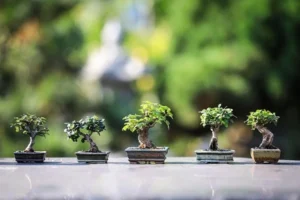If you’ve ever looked around your small apartment and wondered whether you could start growing your own lettuce or basil right on your windowsill, you’re in good company. With the rise of urban gardening and sustainable living, more people are discovering the surprisingly simple (and fun) world of vertical hydroponics.
The idea of growing plants without soil might sound a little futuristic, but it’s actually very doable — even if you don’t have a green thumb. Vertical hydroponics is a smart, space-saving way to grow fresh greens and herbs indoors. It uses nutrient-rich water and vertical stacking to maximize plant growth in tight spaces like apartments, balconies, or even sunny bathrooms.
In this guide, you won’t find any intimidating scientific jargon or over-the-top gear lists. Instead, we’ll walk through the essentials: the mindset, space, and gear you need to get started. Think of this as your beginner’s toolkit to kickstart a satisfying and surprisingly easy indoor garden journey.
Hydroponics for the Clueless: What It Actually Is
Before diving into the toolkit, let’s get clear on what vertical hydroponics actually means.
Hydroponics is a method of growing plants without soil. Instead, roots are suspended in or above a water-based solution that’s enriched with nutrients. The plants get everything they need directly from the water.
Vertical hydroponics takes this one step further by stacking the plants upward in towers, shelves, or vertical frames. This approach is perfect for small spaces where horizontal growing just isn’t an option.
Why is this such a game-changer for apartment dwellers?
- You can grow fresh food indoors all year round.
- It takes up very little space.
- It uses up to 90% less water than traditional gardening.
- There’s no dirt involved (so no mess).
You don’t need a fancy setup to start. In fact, many beginners begin with small, DIY-friendly systems that cost less than a night out. It’s low-risk, high-reward, and super satisfying.
The Mental Toolkit: What Mindset You Really Need
Before you buy anything, let’s talk mindset. Hydroponics is accessible, but like anything new, it comes with a bit of a learning curve. If you’re the type who expects instant perfection, you might get discouraged. But if you’re willing to be curious, make a few mistakes, and keep going, you’ll do great.
Here are a few things to keep in mind:
- Be patient. Your plants need time, and so do you.
- Start small. It’s tempting to want a full wall of greenery, but begin with 2-3 plants and build confidence first.
- Don’t be afraid to mess up. Most beginner mistakes are easy to fix.
- Enjoy the process. Watching plants grow is deeply rewarding.
You don’t need to be a botanist or a DIY wizard to succeed. You just need a little curiosity and a willingness to try.
The Space Check: Finding a Spot to Grow
You don’t need an entire room to set up a vertical hydroponic system. Even a well-lit corner, windowsill, or spare shelf can work.
When scouting for a space, consider these factors:
Light Availability
Plants need light to grow. South-facing windows are best, but east or west can also work. If natural light is limited, don’t worry — grow lights are easy to use (more on that soon).
Vertical Clearance
Make sure there’s enough height for your system. Most beginner vertical systems are between 2 to 5 feet tall.
Access to Water & Drainage
You’ll need to check and refill your reservoir regularly. Choose a spot that’s near a sink or where you won’t mind a few water drips now and then (a tray underneath works wonders).
Temperature & Airflow
Keep your system in a room that stays between 65-75°F. Good airflow helps prevent mold and promotes healthy growth.
Some unexpected but effective places to grow:
- Bathroom shelves with good light
- Kitchen counters
- Bookshelves near a window
- Balcony corners (if enclosed and protected)
Your Beginner Hydroponic Toolkit: The Essentials
Now let’s talk about the actual gear. You don’t need a huge investment, just the right components to get started. Here’s what belongs in your beginner toolkit:
Growing Structure (Vertical-Friendly)
This is the framework that holds your plants in place. It could be as simple as a vertical PVC pipe with holes or a tiered shelving unit with planters.
Beginner Options:
- DIY PVC Towers: Inexpensive and customizable
- Stackable Planters: Great for leafy greens and herbs
- Hanging Hydroponic Bags or Tubes: Perfect for windows
- Pre-made kits: Ideal if you want something plug-and-play
Make sure your structure is stable and made from food-safe materials.
Grow Medium (No Dirt Needed)
This replaces soil by holding the plant roots in place while allowing water and nutrients to flow.
Popular Beginner Choices:
- Rockwool Cubes: Good water retention, easy for seedlings
- Clay Pebbles (LECA): Reusable, great oxygen flow
- Coco Coir: Eco-friendly and moisture-retentive
Start with something simple and accessible. Rockwool is widely recommended for first-time growers.
Water Reservoir & Basic Plumbing
This holds your nutrient solution and feeds the plants.
Simple Setup:
- A food-grade plastic bin or bucket as your reservoir
- Basic tubing or a small submersible pump
- Net cups to suspend plants above the water
You can go ultra-simple (gravity-fed systems) or add a pump for continuous flow. Either way, it doesn’t need to be fancy.
Nutrient Solution (Plant Food)
Since there’s no soil, your plants get their nutrition from the water. You’ll need a hydroponic nutrient mix.
What to Look For:
- A balanced 3-part nutrient formula (commonly labeled Grow, Micro, and Bloom)
- Pre-mixed liquid nutrients are easiest for beginners
- Follow dosage instructions exactly to avoid overfeeding
Light (If the Sun Isn’t Enough)
If your apartment doesn’t get at least 6-8 hours of bright light daily, you’ll need a grow light.
Beginner-Friendly Lights:
- Full-spectrum LED panels
- Clip-on grow lights for small setups
- Adjustable light bars for shelves
Use a timer to keep lights on for 12-14 hours a day. Too much or too little light can affect growth.
A Timer & Optional Tech Helpers
While not essential, a few extras can make life easier:
- Timer: Automates your light cycle
- pH test strips or meter: Helps monitor water acidity
- TDS (ppm) meter: Measures nutrient concentration
Again, none of these are strictly necessary for beginners. Start simple. Add tools as you grow more confident.
Beginner Mistakes to Avoid (But Totally Okay If You Make Them)
Even seasoned hydroponic growers still mess up. Here are a few common beginner missteps — plus a little guidance on how to avoid them:
- Overwatering or drying out your grow medium: It’s easy to assume more water is better, but overwatering can suffocate roots and encourage mold. Make sure your grow medium is moist, not soggy. Conversely, don’t let it dry out completely. Consistent checks (every 1-2 days) will help.
- Placing your system in a dark or drafty spot: Light and temperature are crucial. A spot that’s too dark will stunt growth, while drafty windows or vents can chill your plants. Aim for consistent, warm light. If in doubt, supplement with a grow light.
- Choosing plants that are too demanding: We all want to grow tomatoes, but they’re not the best choice when starting out. Go for fast, forgiving greens like lettuce or herbs until you get the hang of nutrient balances and lighting.
- Using too much nutrient solution: More nutrients do not mean faster growth. In fact, overfeeding can burn roots and stunt your plants. Always measure carefully, and start with half-strength solutions when in doubt.
- Letting water sit too long without cleaning the reservoir: Stagnant water can grow algae or smell unpleasant. Aim to flush and clean your reservoir every two weeks, even if things seem fine. A quick rinse and wipe-down go a long way.
- Skipping pH checks entirely: Even if you’re not using high-end meters, basic pH strips are cheap and give you a rough idea. Most plants prefer a range of 5.5 to 6.5. If you’re outside that, nutrients might not be absorbed properly.
- Ignoring signs from your plants: Yellow leaves? Slow growth? Wilting? These are clues your setup needs a tweak — maybe it’s light, maybe it’s nutrients, maybe root rot. Don’t panic. Troubleshooting is part of the process.
Mistakes are how you learn. The key is not to get discouraged. Take them as opportunities to improve your system and your confidence.
Your First Grow Suggestions
Start with easy wins. These plants are fast-growing, low-maintenance, and forgiving — ideal for building confidence and getting familiar with your system. Think of them as your hydroponic training wheels.
Leafy Greens (The MVPs of Hydroponics)
Leafy greens are your best friends when starting out. They’re fast growers, don’t need much support, and thrive in vertical hydroponic systems.
- Lettuce — Varieties like Butterhead, Romaine, and Leaf Lettuce do exceptionally well. They’re not fussy about nutrients or light and can be harvested as early as three weeks after planting.
- Spinach — Prefers cooler temps, so if your apartment runs a bit chilly, this is a win. Great in smoothies or tossed into pasta.
- Arugula — Grows quickly, has a peppery bite, and is surprisingly hardy. Plus, it’s more expensive in stores — bonus points for saving money.
Herbs (Flavor Boosters & Apartment Heroes)
Herbs are compact, useful, and incredibly satisfying to grow. Plus, who doesn’t love snipping fresh basil right into their pasta?
- Basil — Thrives in warm, well-lit setups. Easy to grow and super fragrant.
- Mint — Practically impossible to kill. Just be aware it grows fast and likes to spread — keep it in check with trimming.
- Cilantro — Grows quickly but can bolt (flower) in warm temps. Keep it slightly cooler and harvest often.
- Parsley — Slower to germinate but rewarding. Great for garnishes, soups, and sauces.
If you stick with 2-3 types of plants at first — say, butter lettuce, basil, and spinach — you’ll have a great mix of fresh ingredients and a manageable learning curve. Once you get the hang of things, you can start branching out into fruiting crops or more demanding herbs.
Final Pep Talk: Your Hydroponic Journey Starts Here
You don’t need to know everything. You just need to start. Pick a corner, gather your essentials, and take that first step. In a few weeks, you’ll be watching your plants grow with a mix of pride and amazement.
Vertical hydroponics is more than just a way to grow food in a small space — it’s a mindset shift. It’s about learning to work with nature, even in the most unlikely places.
And hey, if you can grow lettuce on a bookshelf? You can do just about anything.




